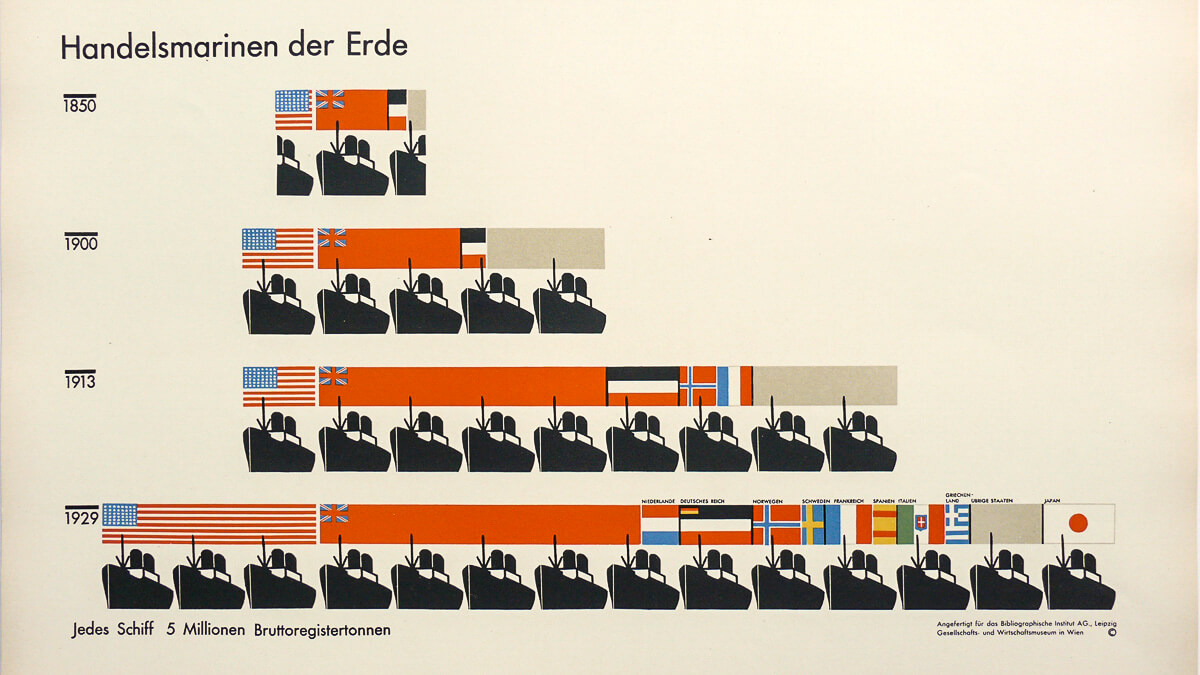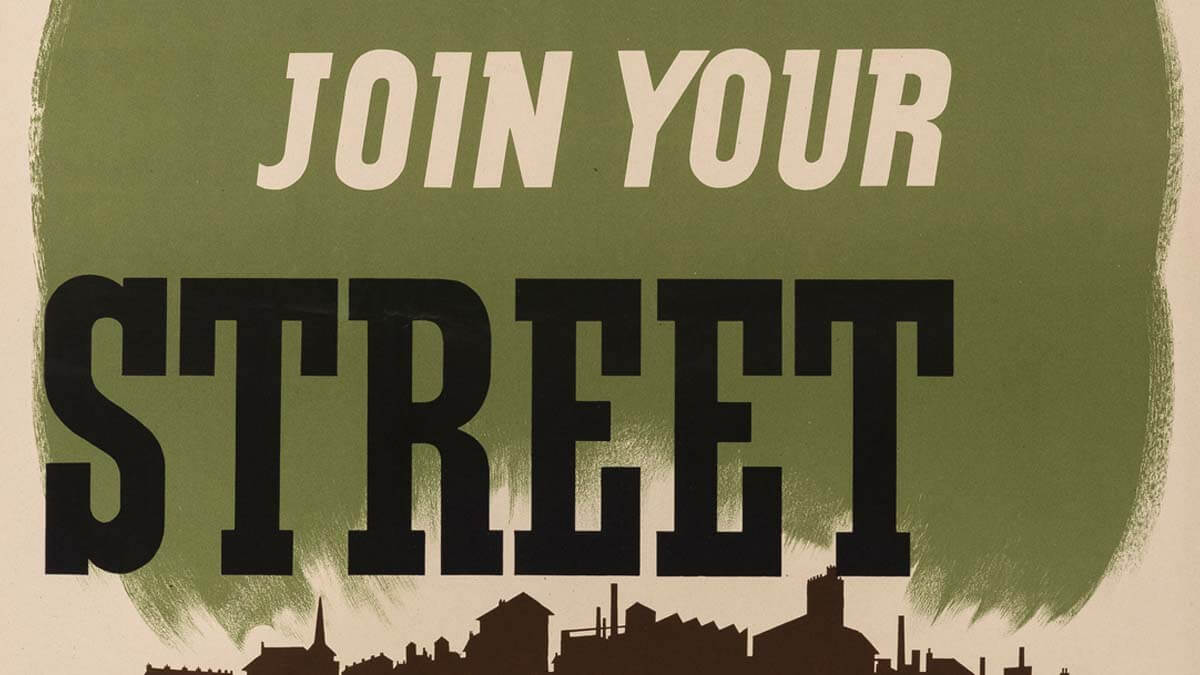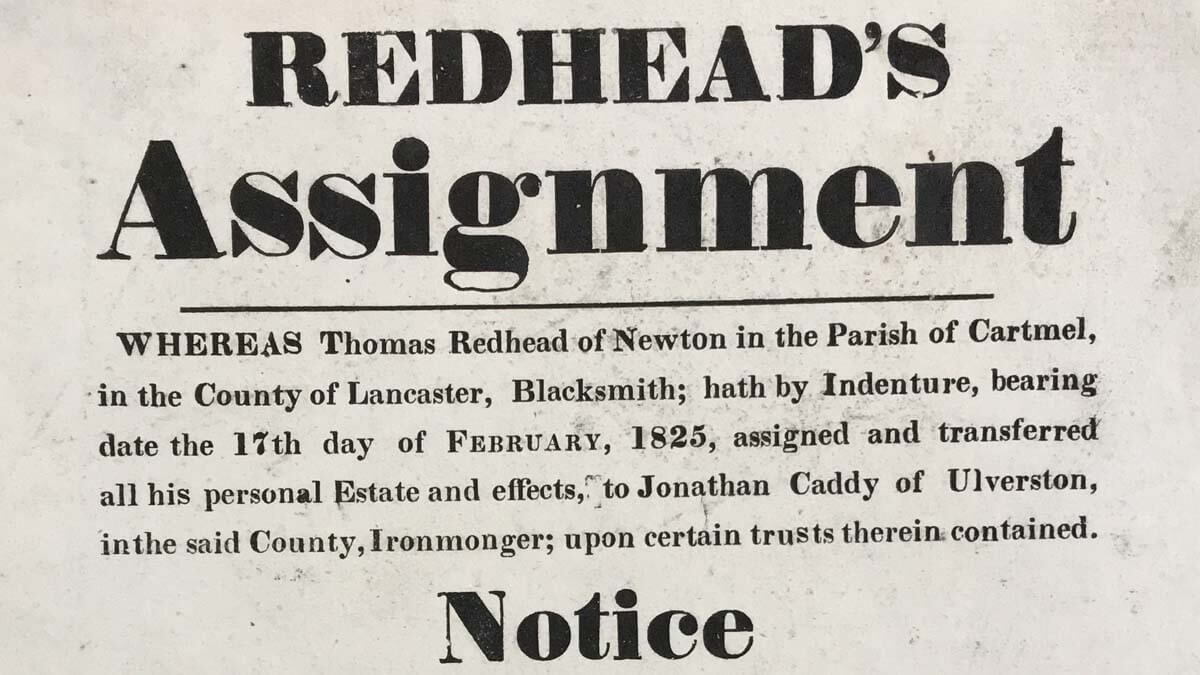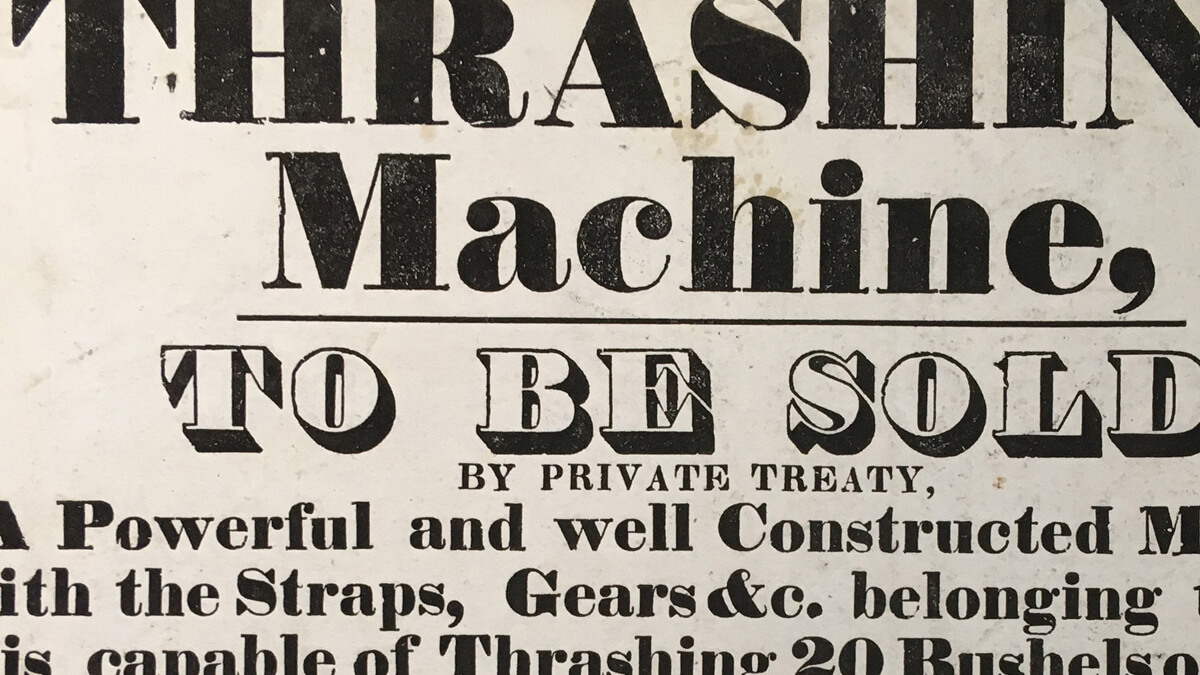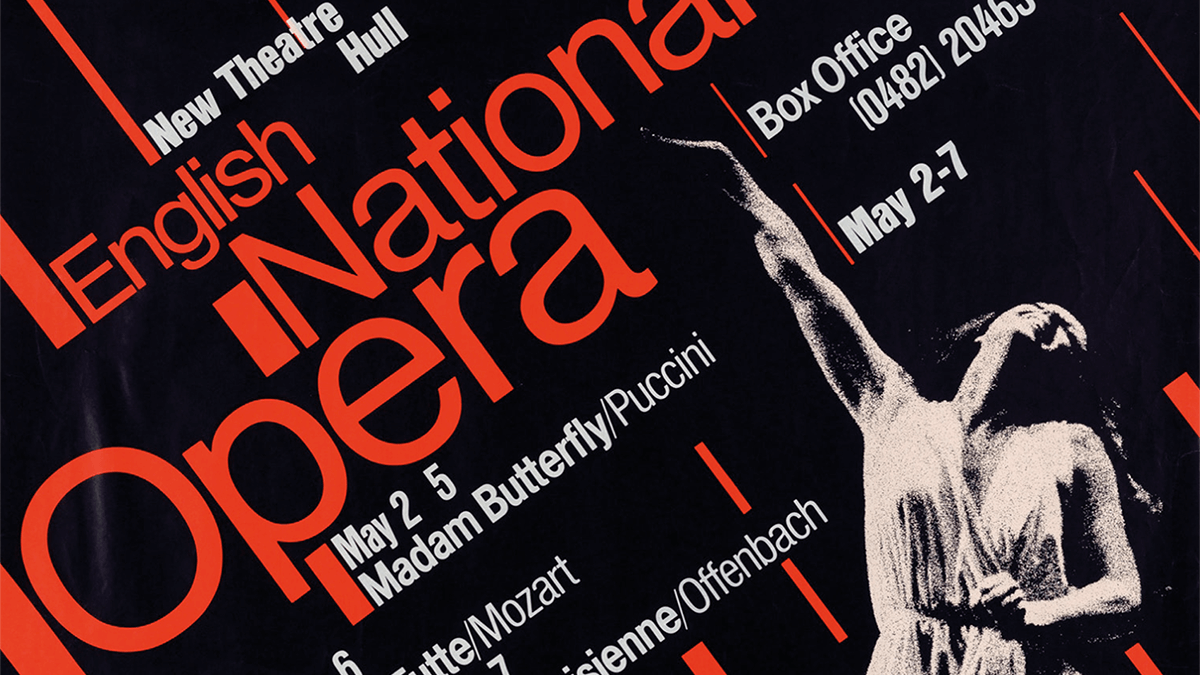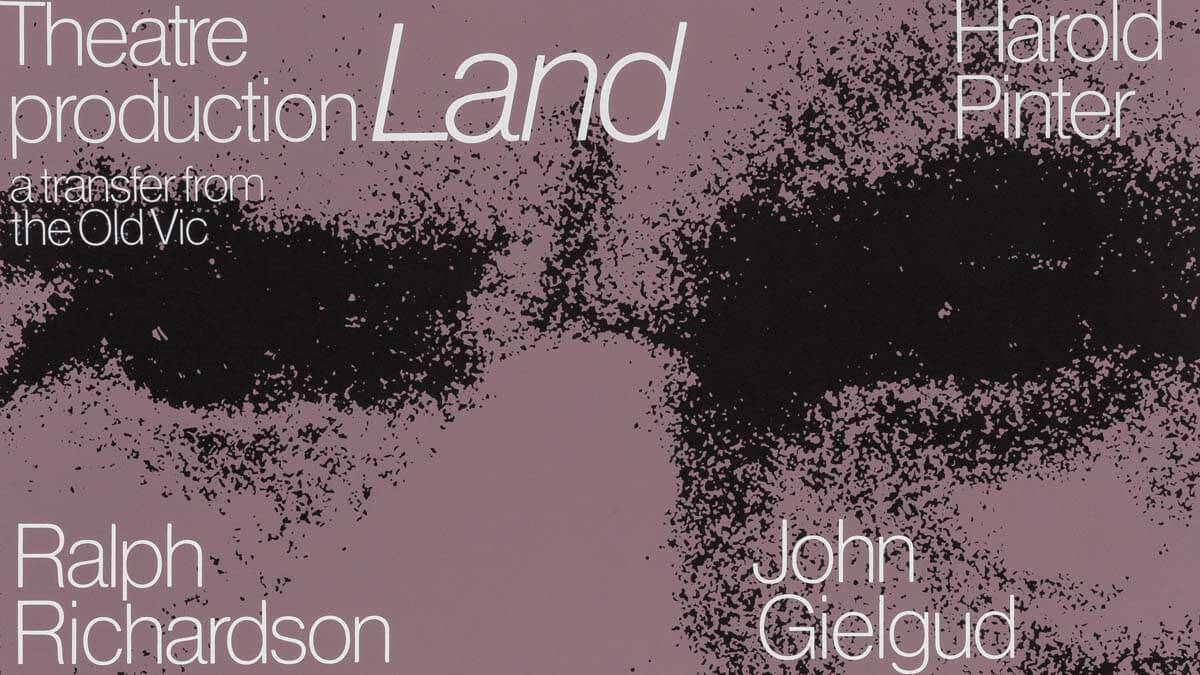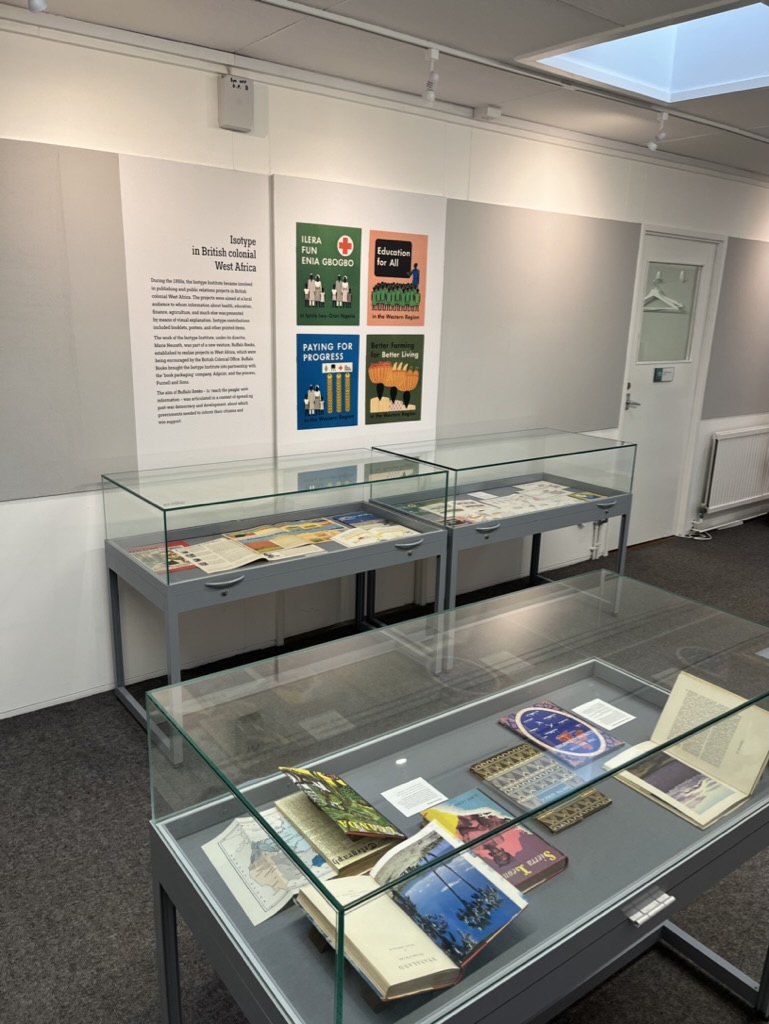The Lettering, Printing and Graphic Design Collections (LPGDC) comprise archives and artefacts relating to
- twentieth-century graphic design
- typeface design
- Isotype
- printing processes: letterpress, intaglio, lithography
- nineteenth- and twentieth-century printed ephemera
- 3-D public lettering
The Collections are of national and international importance. They are located within the world-leading Department of Typography & Graphic Communication and used extensively in research and teaching.
This select handlist provides collection-level descriptions of key collections.
The Lettering, Printing and Graphic Design Collections are open by appointment. These can be made Mondays, Thursdays and Fridays between 10.00 am and 4.00 pm. Contact Emma Minns e.h.minns@reading.ac.uk
In our collections
Isotype Collection
The Otto and Marie Neurath Isotype Collection is our comprehensive archive of Isotype materials. The collection, gifted to the University by Marie Neurath in 1971, includes documents, correspondence, published works and artefacts relating to Isotype: its history, principles, working methods, and products.
Isotype revisited was an Arts and Humanities Research Council (AHRC)-funded project based on this collection. It continues to attract the interest of researchers across the world. Marie Neurath’s work on children’s books is a particular area of interest. Picturing Science also attracted AHRC funding.
National Savings Collection
The collection comprises some 300 posters and other printed ephemera such as stamps, bookmarks, and leaflets relating to the period 1917–1985 and mainly from the 1940s to the 1960s. It includes posters specifically aimed at children and schools, posters for HM Forces Savings, and the major World War II and post-war War Savings Campaigns (such as Wings for Victory and Salute the Soldier), which aimed to boost morale on the home front.
John Soulby Collection
The John Soulby Collection comprises over 500 items of provincial jobbing printing produced in Ulverston, Cumbria, by John Soulby junior between 1819 and 1827, including posters, notices, handbills, trade cards, billheads, receipts and a variety of other jobbing work. Many items in the collection are proof items, with letters missing, wrong fonts, manuscript corrections to copy, or smudges from testing if the ink was dry, providing an insight into the working processes of the jobbing printer.
National Theatre Archive
The collection consists of two sets of posters and five boxes of material by two designers who worked for the National Theatre. The posters are designed by Ken Briggs during 1963–74 and Richard Bird during 1975-1986. The boxes contain material designed by Ken Briggs for the National Theatre that include special programmes for theatre productions, and printed ephemera, such as stock sheets, internal envelopes, labels, standard information, invitation and reply cards, compliments slips/cards, advance booking forms and bookshop services leaflets.
Olympic Poster Collection
The collection consists of posters relating to the Olympic Games which took place in Munich in 1972. Otl Aicher (1922–1991) was the graphic designer for the Olympic games in Munich. He was internationally acclaimed well known for visual identity programs including for Lufthansa, and FSB (Franz Schneider Brakel). For the Munich Games, Aicher worked with a small number of elements to construct the identity: colour, emblem, type, format and grid. He developed a colour palette that was easily identifiable and effective at communicating information. Aicher famously created 120 pictograms – including for the individual Olympic sports – to enhance the visual communication across the Games.
Baxter Collection
The collection consists of foundation plates, electrotype plates, woodblocks, stereotype plates and prints by George Baxter and his licensees. Baxter pioneered a new method of printing in colour by using wood or metal relief blocks together with steel foundation plates and oil-based inks. The process led to the production of reasonably priced decorative colour prints. Prior to Baxter’s innovation, most prints were either monochrome or coloured by hand. Baxter’s work is highly respected and was widely collected by museums, Reading Museum being one of a handful of museums with large collections of his work.
